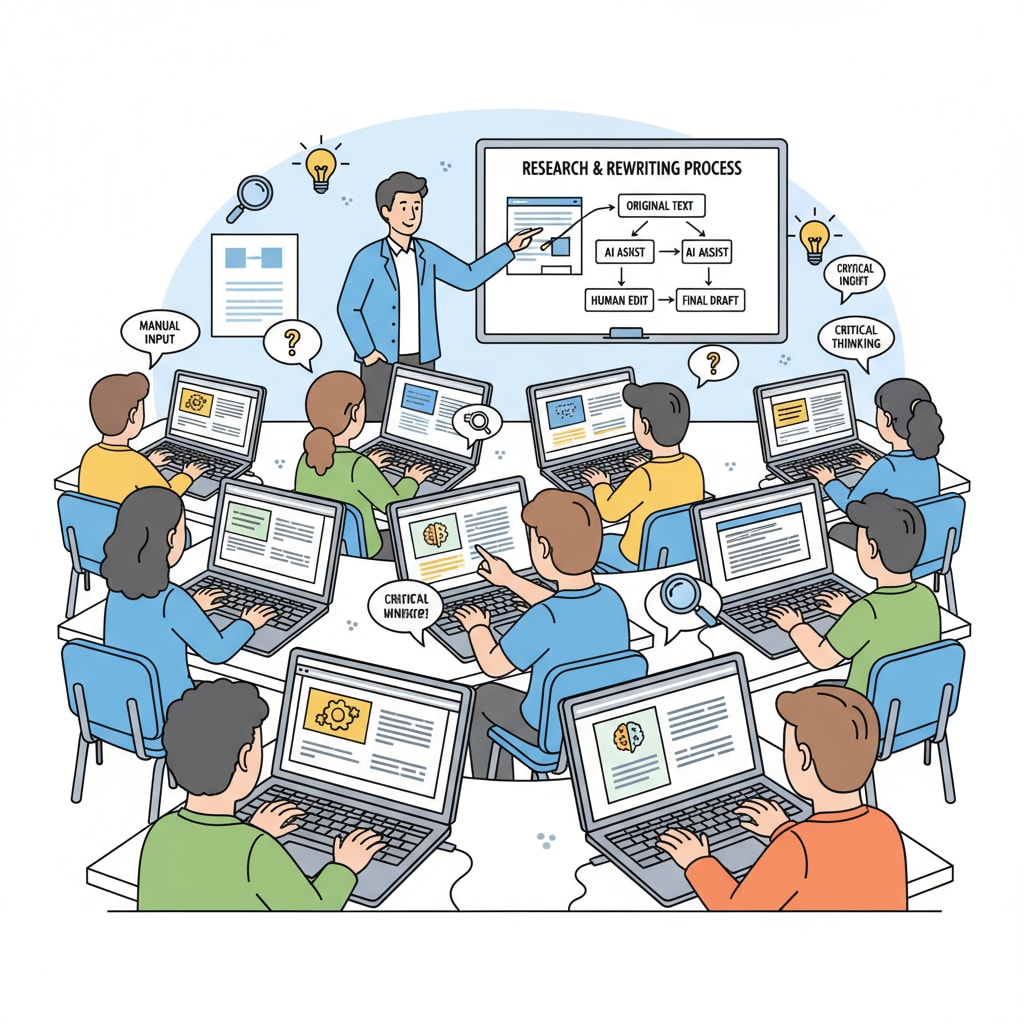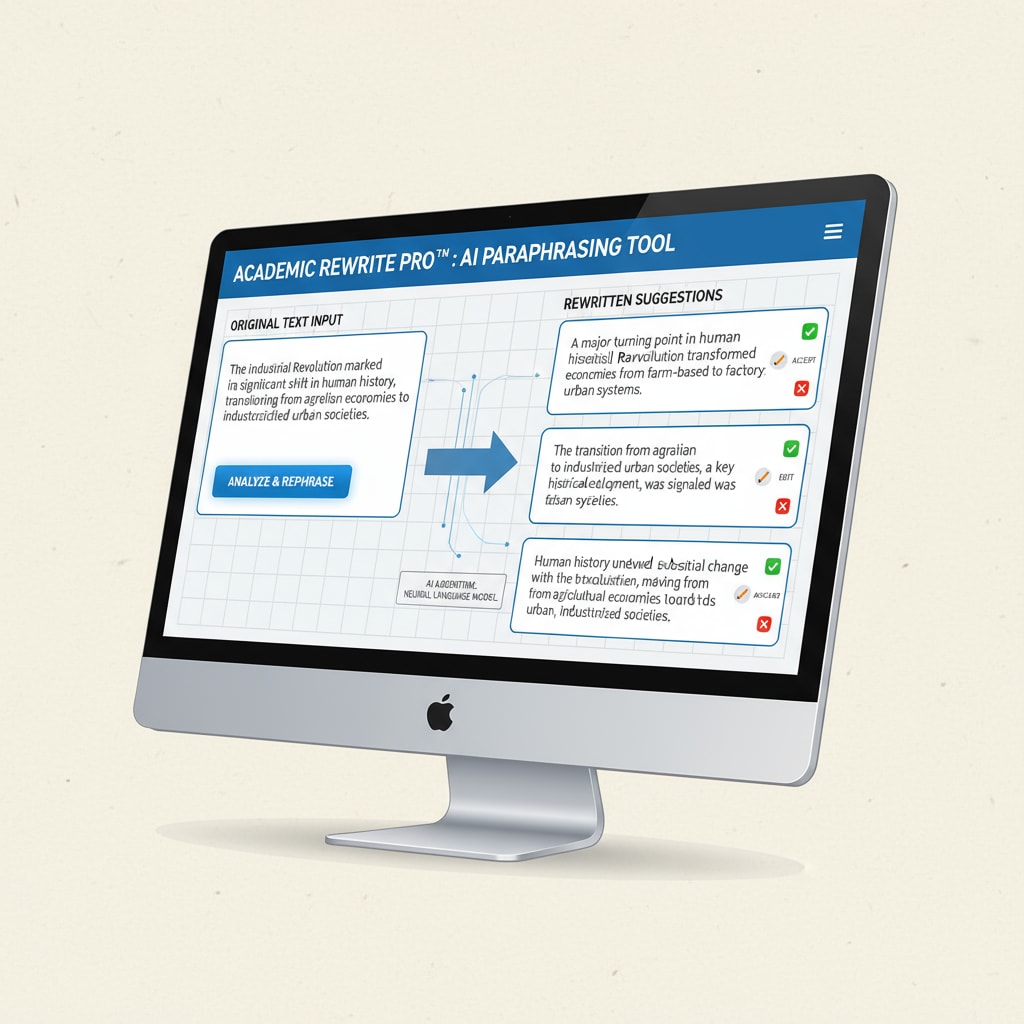The increasing presence of AI technology in the educational landscape has brought about a new concern: the use of AI rewriting tools, manual input of rewritten content, and the effectiveness of AI detection in K12 education. As students become more tech-savvy, the temptation to use these methods to bypass academic scrutiny is growing.

This phenomenon not only challenges the traditional concept of academic integrity but also forces educators to reevaluate their assessment methods.
The Rise of AI Rewriting Tools in K12
AI rewriting tools have become increasingly accessible and user-friendly. These tools can rephrase text, change sentence structures, and even adjust the tone of a passage. For example, a simple online AI rewriting tool can take a plagiarized piece of writing and transform it into something that appears original at first glance. As a result, K12 students, who may be under pressure to complete assignments, are more likely to turn to these tools. According to Educause, the rapid development of AI in recent years has made it easier for students to find and use such tools, blurring the lines between legitimate and unethical academic practices.

The Feasibility of Evading AI Detection through Manual Input
Some students believe that manually inputting the rewritten content can help them avoid AI detection. The logic behind this is that the act of typing can introduce enough variability in the text to fool detection algorithms. However, detection technologies are also evolving. Many modern AI detection tools can analyze not only the content but also the writing style, vocabulary usage, and the overall flow of the text. For instance, they can detect patterns that are typical of AI-generated or rewritten text, even if it is manually input. Turnitin, a well-known plagiarism detection service, has been constantly updating its algorithms to better identify such attempts. So, while manual input may seem like a viable solution, it is not a foolproof way to avoid detection.
Another aspect to consider is the time and effort involved. Manually inputting a large amount of rewritten text is time-consuming. In addition, students may still make mistakes during the input process that could give away the use of AI rewriting tools. Therefore, although it might provide a temporary shield, it does not guarantee evasion of detection in the long run.
The Ethical Dilemma in K12 Education
The use of AI rewriting tools and manual input to avoid detection raises serious ethical questions in K12 education. Academic integrity is the cornerstone of the educational system, and by using these methods, students are essentially cheating. It undermines the value of hard work, learning, and the educational experience itself. For example, when a student uses an AI tool to complete an assignment, they miss out on the opportunity to develop critical thinking, writing, and research skills. Moreover, it is unfair to honest students who put in the effort to complete their work independently. This not only affects the individual student’s growth but also has a negative impact on the overall educational environment.
Educators are now faced with the difficult task of instilling ethical values in students while also dealing with the technological advancements. They need to teach students about the importance of academic integrity and the long-term consequences of unethical behavior. In addition, they must adapt their teaching and assessment methods to address this new challenge.
Building Digital Literacy in K12 Students
One of the most effective ways to combat the misuse of AI rewriting tools and manual input is to build digital literacy among K12 students. Digital literacy encompasses the ability to use technology responsibly, understand its implications, and evaluate information critically. Educators can incorporate digital literacy lessons into the curriculum. For example, they can teach students how to identify reliable sources, how to use AI tools for legitimate learning purposes, and the ethical boundaries of technology use. By doing so, students will be better equipped to make informed decisions and understand the importance of academic integrity in the digital age.
Moreover, schools can organize workshops and seminars to raise awareness about the proper use of technology in education. These sessions can include real-life examples of how unethical use of AI can have negative consequences. In addition, parents can also play a crucial role in supporting digital literacy at home. By monitoring their children’s online activities and discussing the importance of honesty in academic work, parents can help reinforce the values taught in school.
Readability guidance: The article uses short paragraphs to clearly present different aspects of the issue. Each H2 section provides a focused discussion, and lists could be further incorporated to make the content more organized. The use of active语态 is prioritized, and transition words are used throughout to enhance the flow of the article.


